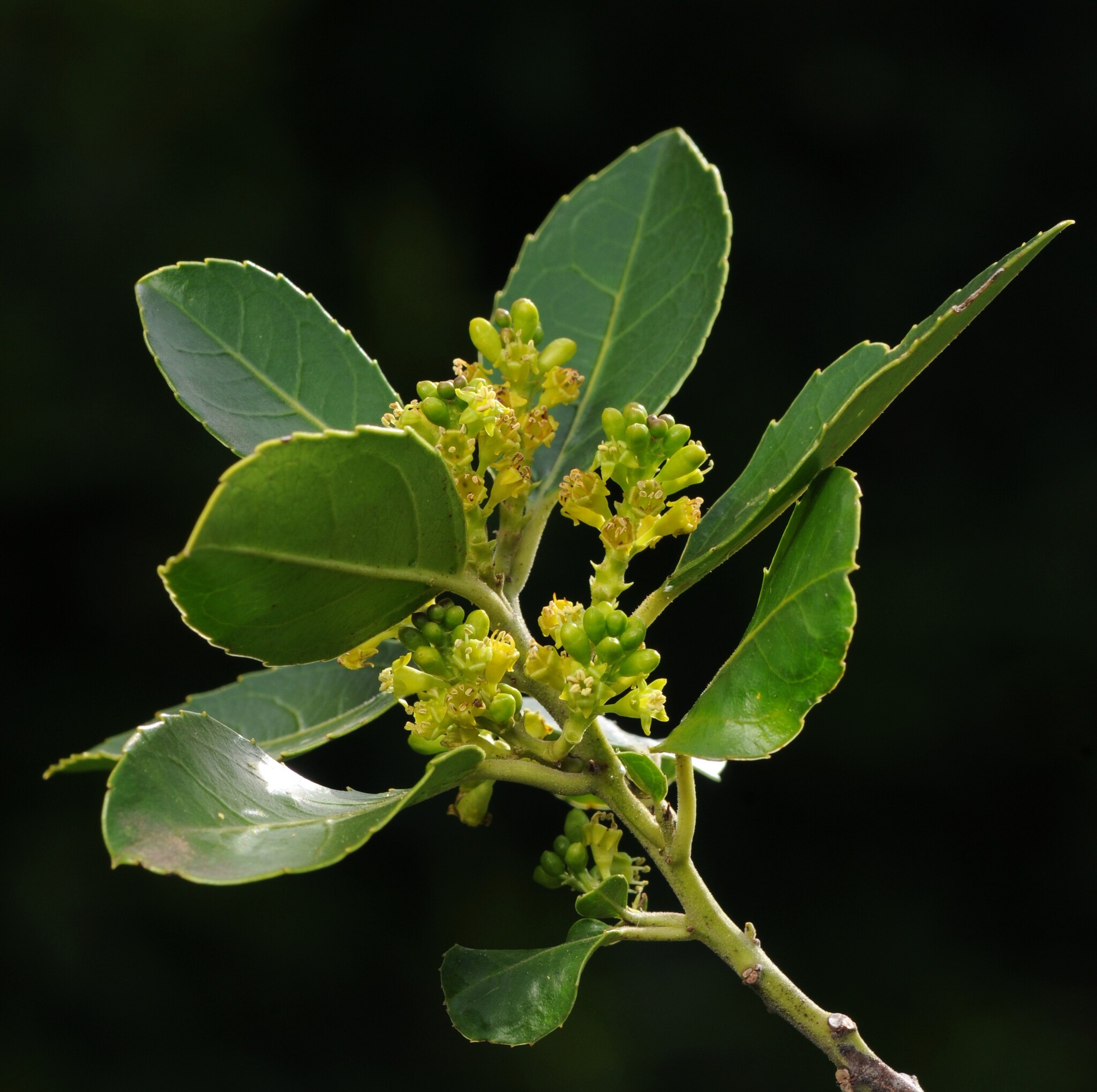
Classical name for this genus.
Shrubs or small trees. Leaves alternate, pinnately veined, stalked. Flowers mostly unisexual and sexes on different plants. Calyx tube fused to the ovary, the sepals 4-5 and soon shed. Petals 0, 4 or 5. Stamens 5. Disk absent. Ovary superior, of 2-4 chambers, the style with 2-4 branches. Fruit a drupe containing 2-4 nutlets.
Grown mostly for the dense, formal foliage.
125 species, mostly from the northern hemisphere but extending to Brazil and S Africa.
Seed, cuttings and grafting.
Fruits and other parts are used for medicinal purposes (R. cathartica, is a purgative, as is R. purshiana, Cascara). Dyes are extracted from the bluish purple berries, e.g. the pigment sap green from R. cathartica, green indigo used for silk dyeing from R. utilis, and a yellow dye from R. infectoria. R. frangula was once the source of charcoal used in gunpowder. A few species are used for timber.
Leaves alternate, pinnately veined; flowers greenish and fruit fleshy.
Source: (2002). Rhamnaceae. In: . Horticultural Flora of South-eastern Australia. Volume 3. Flowering plants. Dicotyledons. Part 2. The identification of garden and cultivated plants. University of New South Wales Press.
